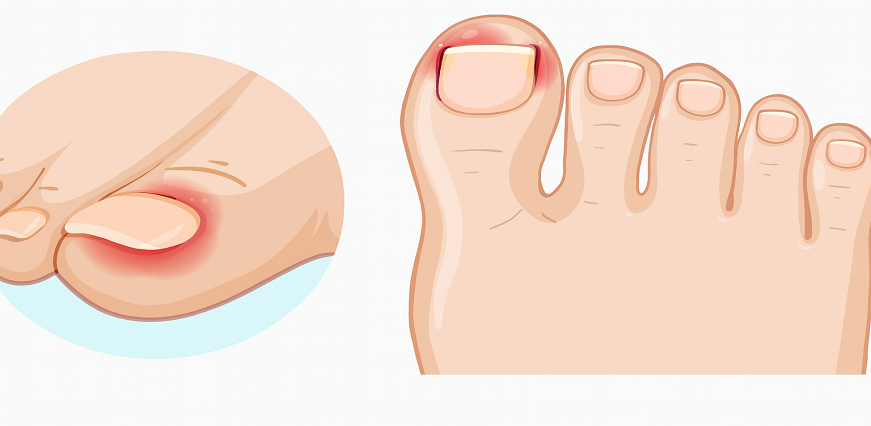





No lab centers are available in this city

Are you experiencing pain or numbness in your arms, legs, hands or feet? Do you feel weakness or cramping in your muscles when moving around? If so, you may be suffering from Peripheral Vascular Disease (PVD). PVD is a common condition that affects millions of people worldwide. It occurs when the blood vessels outside of the heart and brain become blocked or narrowed due to various reasons. In this blog post, we will discuss the different types of PVD, their causes and symptoms as well as how it can be diagnosed. So let's dive into the world of PVD and learn more about this often-overlooked disease!
Peripheral Vascular Disease, also known as peripheral artery disease (PAD), is a condition that affects the blood vessels outside of the heart and brain. The arteries in our body carry oxygen-rich blood from the heart to all parts of the body.
When these arteries become narrowed or blocked due to plaque buildup or inflammation, it results in PVD. This reduced blood flow can lead to pain, numbness, or tingling sensations in your arms, legs, hands, and feet.
PVD is most commonly found in the legs but can affect other areas such as arms, stomach and kidneys. Smokers, people with high cholesterol levels, and those who have diabetes are at an increased risk of developing PVD.
Without proper treatment and management, PVD may cause serious complications such as infections or ulcers that don't heal easily. That's why early diagnosis and proper treatment are essential for managing this condition.
There are different types of PVD, each with distinct characteristics.
Peripheral Vascular Disease (PVD) can be caused by various factors. One of the leading causes is atherosclerosis, which occurs when plaque build-up in the arteries restricts blood flow.
Other risk factors that contribute to PVD include smoking, high blood pressure, diabetes and high cholesterol levels. These conditions cause damage to the inner lining of the artery walls and make it easier for fatty deposits to form.
Another possible cause of PVD is an injury or trauma that damages blood vessels. Blood clots can also develop within veins - known as deep vein thrombosis (DVT) - causing severe blockages in peripheral arteries.
Apart from these common causes, some rare genetic diseases such as Raynaud's syndrome have also been linked with Peripheral Vascular Disease. It is important to note that age and family history are significant contributing factors as well.
All in all, understanding what causes PVD helps individuals take necessary steps towards the prevention and management of this condition. By addressing modifiable risk factors such as quitting smoking or managing diabetes effectively through lifestyle modifications or medications under medical supervision could help prevent PVD from occurring or worsening over time.
Symptoms of PVD can vary depending on the severity and location of the affected blood vessels. However, some common symptoms include pain or discomfort in the legs, feet, arms or hands during physical activity which subsides with rest.
Another symptom of PVD is numbness or tingling sensation in fingers and toes. In severe cases, people may also experience skin discoloration in their extremities due to inadequate blood flow. Additionally, slow-healing wounds on legs and feet could also be an indication of PVD.
For a few people suffering from this disease, they may not show any symptoms at all until it reaches its advanced stages. Therefore it's crucial to get diagnosed by a medical professional if you are experiencing any unusual sensations such as cramping after routine exercises.
It's important to note that these signs are not exclusive to Peripheral Vascular Disease alone but could indicate other illnesses as well. That being said, if you notice any persistent symptoms related to your circulatory system or overall health issues concerning movement then it’s always best to consult with your doctor without delay for early treatment options.
Diagnosing Peripheral Vascular Disease (PVD) can be challenging, as its symptoms are common among other conditions. However, early detection is crucial in preventing complications and improving outcomes.
A physical exam may reveal signs of PVD such as weak or absent pulses and coolness in the affected limb. To confirm a diagnosis, your doctor may order additional tests like ankle-brachial index (ABI), where blood pressure measurements are taken at different points along the leg to assess blood flow.
Another diagnostic test is ultrasound imaging which uses high-frequency sound waves to create images of the arteries and identify blockages. Magnetic resonance angiography (MRA) and computed tomography angiography (CTA) also provide detailed images of the blood vessels.
In some cases, an invasive procedure called an angiogram may be necessary for accurate diagnosis. This involves inserting a thin tube into a blood vessel and injecting dye to highlight narrowings or blockages on X-ray images.
Ultimately, accurately diagnosing PVD requires careful consideration of all patient's symptoms alongside appropriate testing by medical professionals. It's essential not to ignore any signs or risk factors for this disease and seek prompt medical attention if you experience any unusual changes in your legs or feet's health.
Peripheral Vascular Disease is a serious condition that can lead to severe complications if left untreated. It affects millions of people worldwide and is caused by various factors such as smoking, obesity, high blood pressure, and high cholesterol levels.
The symptoms of Peripheral Vascular Disease may vary from mild discomfort to severe pain in the legs, feet or arms while walking or exercising. If you are experiencing any of these symptoms, it's vital to seek medical attention immediately.
Fortunately, there are several treatment options available for Peripheral Vascular Disease. Lifestyle changes like quitting smoking and regular exercise can have significant impacts on managing the disease. Medications that improve blood flow and prevent clotting can also be prescribed in more severe cases.
Early diagnosis is essential when dealing with this condition since delaying treatment could lead to irreversible damage or amputation. Therefore it's crucial always to pay attention to your body and act promptly when something feels off.





 Allergy Test
Allergy Test
 Anemia Test
Anemia Test
 Auto immune
Auto immune
 Blood disorder
Blood disorder
 Bone and Joint
Bone and Joint
 Cancer Test
Cancer Test
 Cardiology Test
Cardiology Test
 Covid Recovery
Covid Recovery
 Dengue Test
Dengue Test
 Depression
Depression
 Diabetes Test
Diabetes Test
 Fatigue
Fatigue
 Fever Test
Fever Test
 Full body
Full body
 Gastro Test
Gastro Test
 Gastrointestinal
Gastrointestinal
 Gynaecology Test
Gynaecology Test
 Heart Test
Heart Test
 HIV Test
HIV Test
 Hormone Test
Hormone Test
 Hypertension
Hypertension
 Immunity Test
Immunity Test
 Infectious Disease
Infectious Disease
 Infertility Test
Infertility Test
 Influenza Test
Influenza Test
 Iron Test
Iron Test
 Kidney Test
Kidney Test
 Liver Test
Liver Test
 Lung Test
Lung Test
 Nephrology
Nephrology
 Obesity
Obesity
 Orthopedics Test
Orthopedics Test
 Physician
Physician
 Pollution Health Checkup
Pollution Health Checkup
 Pregnancy Test
Pregnancy Test
 Prostate Test
Prostate Test
 Senior Citizen Test
Senior Citizen Test
 STD Test
STD Test
 Thyroid Test
Thyroid Test
 Tuberculosis Test
Tuberculosis Test
 Vitamin Test
Vitamin Test
 Women Health Test
Women Health Test
Sign up takes less than 60 secs and gives you access to your offers, orders and lab tests.
Looks like you are not registered with us. Please Sign up to proceed
OTP will be sent to this number by SMS
We have successfully received your details. One of the agents will call you back soon.
 To reach our help desk call 9213188888
To reach our help desk call 9213188888
No Lab Centers are available in this city
Looks like you are not registered with us. Please Sign up to proceed
OTP will be sent to this number by SMS
Not Registered Yet? Signup now.Looks like you are not registered with us. Please Sign up to proceed





 7982100200
7982100200.png)